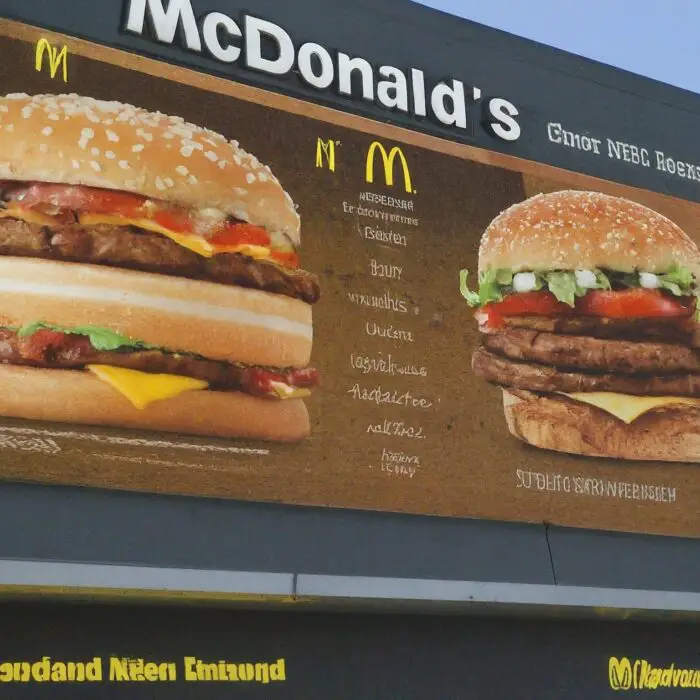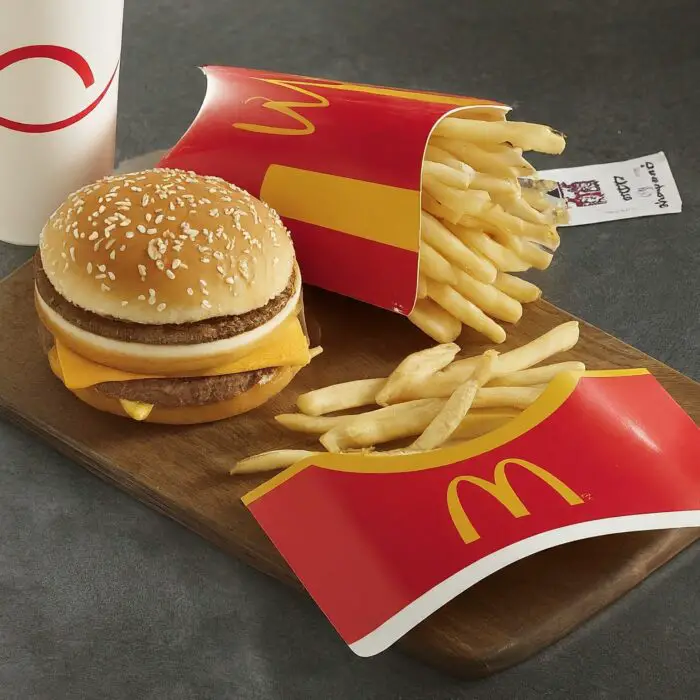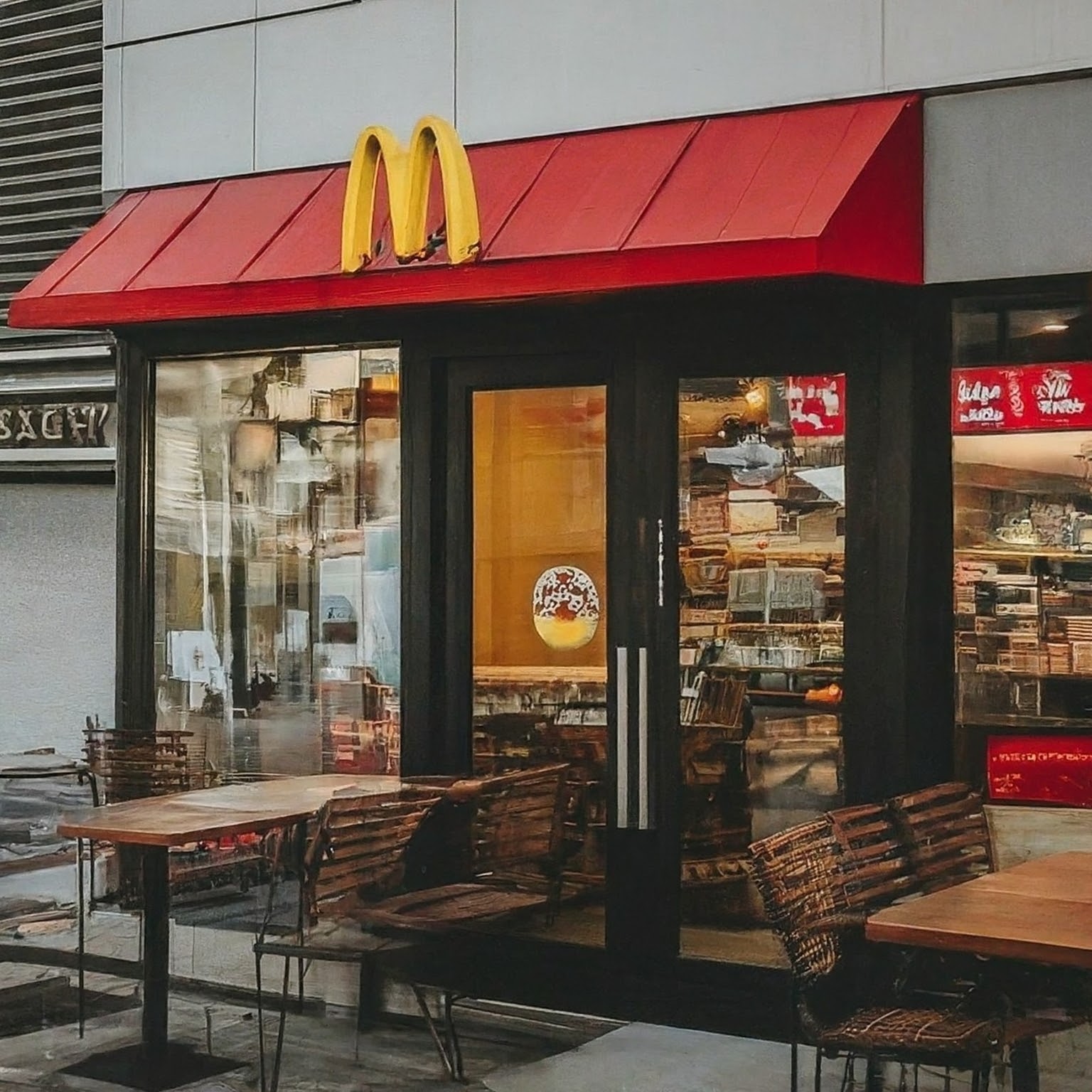
A billboard display of McDonald’s products.
McDonald’s, one of the most recognizable brands in the world, has come a long way from its humble beginnings as a small hamburger stand in San Bernardino, California.
Today, McDonald’s operates in over 100 countries, serving millions of customers daily. This journey from a local eatery to a global fast-food giant is a fascinating story of innovation, adaptation, and strategic expansion.
In this article, we’ll explore the key stages of McDonald’s globalization and the factors that have contributed to its worldwide success.
Humble Beginnings
The McDonald’s story begins in 1940 when brothers Richard and Maurice McDonald opened their first restaurant, McDonald’s Bar-B-Q, in San Bernardino.
They introduced a new concept of fast service and low prices, focusing on a limited menu of high-quality burgers, fries, and beverages.
This innovative approach laid the foundation for the fast-food industry.
The Birth of the Franchise Model
In 1954, Ray Kroc, a Multimixer milkshake machine salesman, visited the McDonald brothers’ restaurant. Impressed by their efficient operation, Kroc envisioned a nationwide chain of McDonald’s restaurants.
He proposed a franchising model that would allow rapid expansion while maintaining consistent quality and service.
In 1955, Kroc opened the first McDonald’s franchise in Des Plaines, Illinois, marking the beginning of McDonald’s transformation into a national and eventually global brand.

McDonald’s drink products.
National Expansion
Throughout the late 1950s and 1960s, McDonald’s expanded rapidly across the United States. Kroc’s vision and the franchise model allowed the company to grow quickly while maintaining control over quality and brand standards.
By 1965, there were over 700 McDonald’s restaurants in the United States. The company’s success was driven by several key factors:
- Consistency: Customers could expect the same high-quality food and service at any McDonald’s location.
- Innovation: McDonald’s introduced new menu items, such as the Filet-O-Fish, Big Mac, and Egg McMuffin, which became iconic.
- Marketing: The company invested heavily in advertising, creating memorable campaigns and mascots like Ronald McDonald.
Going Global
McDonald’s international expansion began in 1967 with the opening of its first restaurant outside the United States in Richmond, British Columbia, Canada. This was followed by the opening of restaurants in Puerto Rico and the Netherlands.
The company’s global reach continued to grow throughout the 1970s and 1980s, with McDonald’s establishing a presence in countries across Europe, Asia, and Latin America.
Adapting to Local Markets
One of the keys to McDonald’s global success has been its ability to adapt to local tastes and cultures. While the core menu remains consistent, McDonald’s customizes its offerings to suit regional preferences. For example:
- India: In a country where beef is not widely consumed, McDonald’s offers a range of vegetarian options, such as the McAloo Tikki burger and the Paneer Wrap.
- Japan: McDonald’s Japan introduced items like the Teriyaki McBurger and Ebi Filet-O (shrimp burger) to cater to local tastes.
- Middle East: McDonald’s restaurants in the Middle East offer halal meat to comply with Islamic dietary laws.
This localization strategy allows McDonald’s to appeal to a diverse customer base while maintaining its global brand identity.
Technological Innovation
McDonald’s has also embraced technological innovation to enhance the customer experience and streamline operations.
In recent years, the company has introduced digital ordering kiosks, mobile app ordering, and delivery services.
These innovations have helped McDonald’s stay competitive in the fast-food industry and meet the evolving needs of customers.

Burger and chips.
Sustainability and Corporate Social Responsibility
As a global brand, McDonald’s recognizes its responsibility to address environmental and social issues. The company has committed to several sustainability initiatives, including:
- Reducing Greenhouse Gas Emissions: McDonald’s aims to reduce its greenhouse gas emissions by 36% by 2030.
- Sustainable Sourcing: The company is committed to sourcing 100% of its coffee, palm oil, and fish from sustainable sources.
- Waste Reduction: McDonald’s is working to reduce waste and increase recycling in its restaurants.
These efforts demonstrate McDonald’s commitment to being a responsible corporate citizen and contributing to a more sustainable future.
The Future of McDonald’s
Looking ahead, McDonald’s continues to innovate and adapt to changing market trends and consumer preferences.
The company is exploring new menu items, expanding its digital capabilities, and investing in sustainable practices.
As McDonald’s approaches its 80th anniversary, it remains a leader in the fast-food industry, known for its ability to balance tradition with innovation.
Q&A
Q: How did McDonald’s start its journey to globalization? A: McDonald’s began its globalization journey in 1967 with the opening of its first international restaurant in Canada, followed by expansions into Puerto Rico and the Netherlands.
Q: How does McDonald’s adapt to local markets? A: McDonald’s customizes its menu to suit local tastes and cultural preferences, offering unique items like vegetarian burgers in India and shrimp burgers in Japan.
Q: What are some of McDonald’s sustainability initiatives? A: McDonald’s is committed to reducing greenhouse gas emissions, sourcing sustainable ingredients, and increasing recycling efforts in its restaurants.
Q: How has technology impacted McDonald’s operations? A: McDonald’s has embraced digital ordering kiosks, mobile app ordering, and delivery services to enhance the customer experience and streamline operations.
Conclusion
From a small hamburger stand in California to a global fast-food empire, McDonald’s journey is a testament to the power of innovation, adaptation, and strategic growth.
By staying true to its core values while embracing change, McDonald’s has become a beloved brand worldwide, known for its consistent quality, community engagement, and commitment to sustainability.
As McDonald’s continues to evolve, it remains a symbol of globalization and a pioneer in the fast-food industry.





